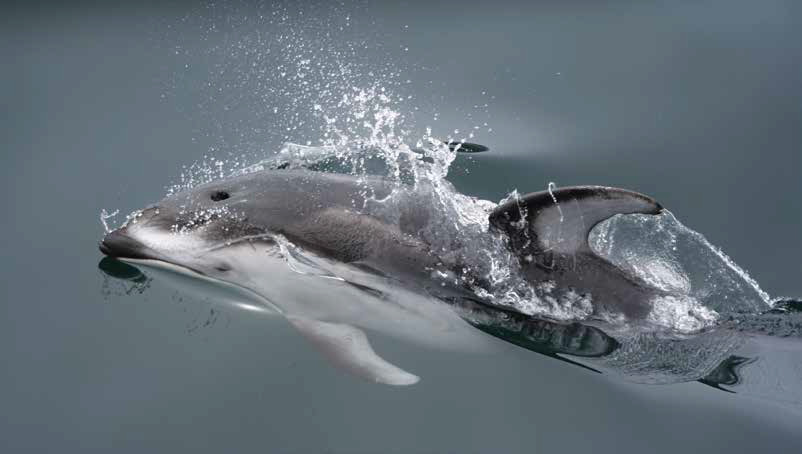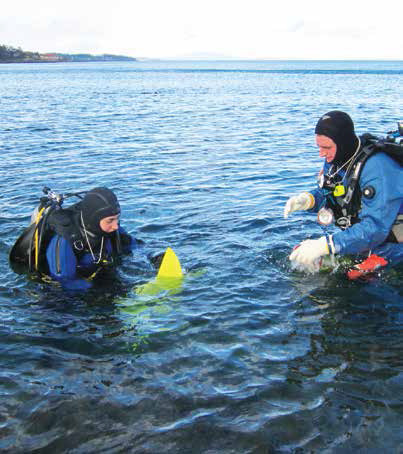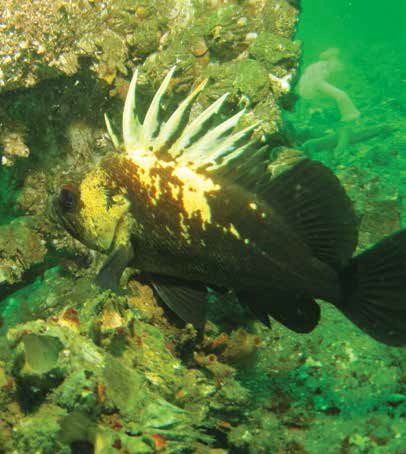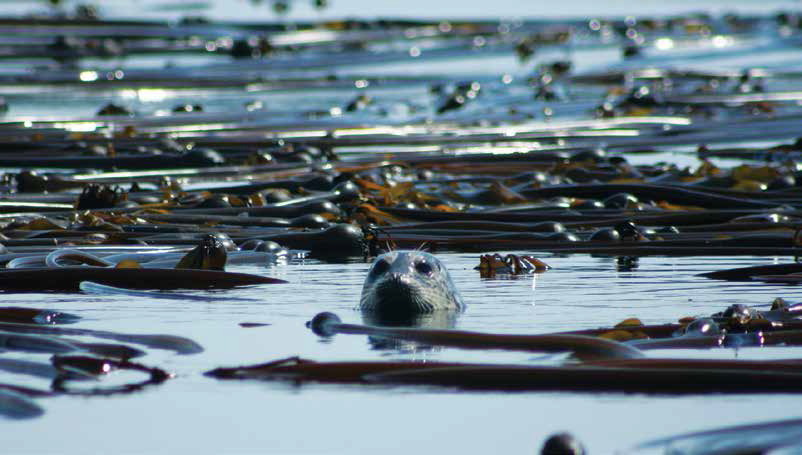Canada-British Columbia Marine Protected Area Network Strategy
Table of Contents
- Complete Text
- Preface
- Introduction
- The Need to Plan MPA Networks
- What is an MPA? What is an MPA Network?
- Vision and Goals for a Network of Marine Protected Areas on the Pacific Coast of Canada
- Planning Principles
- Planning Regions for Marine Protected Area Networks
- Governance
- Moving Forward
- Appendix 1. Marine Ecosystem Stressors in the North East Pacific
- Appendix 2. Protected Area Legislation in Pacific Canada
- Appendix 3. International Union for the Conservation of Nature (IUCN) Guidelines for Applying Protected Area Management Categories
- Background Documents and References
Planning Principles
Marine protected area network planning is intended to contribute to sustainability in our marine environments. Achievement will require balancing the protection of ecological, social, economic, cultural and spiritual values. To that end, the 16 principles that will guide development of MPA networks are environmental, economic, social and cultural in nature. These principles draw from national and international best practices for systematic planning of MPAs and MPA networks.
Ecological Network Design Principles
1. Include the Full Range of Biodiversity Preset in Pacific Canada
Representation & Replication: Represent each habitat type in the overall MPA network. For example, rocky reef habitat, eelgrass meadow, intertidal mudflat, persistent gyres or eddies, or representation within a hierarchy of ecological scales (e.g., representation of rocky reefs within a broader biogeographic classification).
The degree of replication should be assessed at a bioregional (or finer) scale(s) in an effort to safeguard against catastrophic events or disturbances and to build resilience in the overall MPA network.
2. Ensure Ecologically and Biologically Significant Areas are Incorporated
Protection of Unique or Vulnerable Habitats: Design networks to include biophysically special and unique places.
Protection of Foraging or Breeding Grounds: Design networks to include important areas for breeding, feeding and high aggregation.
Protection of Source Populations: Design networks to include important sources of reproduction (e.g., nurseries, spawning areas, egg sources, etc.).
3. Ensure Ecological Linkages
Connectivity: To the extent possible, consider the dispersal dynamics, the home range(s) of marine organisms, and the distribution of marine habitats, over space and time, especially when assessing replicates and when determining the spacing of individual MPA sites within the network.
4. Maintain Long-Term Protection
The benefits of MPA networks may be realized in a few seasons or it may take several decades. Therefore, management measures should be implemented on a permanent basis to better realize the benefits of protection.
5. Ensure Maximum Contribution of Individual MPAS
Size: Design individual MPAs to include sufficient area to meet the related site objectives and effectively contribute to network goals and bioregional objectives over the long term.
Spacing: Design MPA networks to reflect the spacing of habitats, cover the geographic range of habitats and facilitate ecological connectivity between sites. Spacing should be assessed at multiple scales (i.e., bioregionally and coast wide) to best facilitate connectivity.
Shape: Design the shape of individual MPAs to the degree possible to follow ecological boundaries, avoid fragmenting cohesive habitats and facilitate surveillance and enforcement.
Social, Economic and Cultural Network Design Principles
6. Recognize and Consider the Full Range of Uses, Activities and Values Supported by Marine Environments
Functional networks of MPAs will recognize the fundamental relationship between the environment and human activities, cultures and values, requiring an understanding of the value of ecosystem goods and services as well as the intensity and pattern of human uses across time and space. Integration of economic and social considerations in MPA network design should also include an evaluation of the costs of inaction or inertia. The costs of sustaining biodiversity and ecosystem services through protected area planning can be significantly lower than the costs of inaction.
7. Maximize the Positive
Marine protected area network planning will include identification of opportunities to contribute positively to protection of sustainable socioeconomic activities and cultural and spiritual values. Socioeconomic data is typically incorporated in network design as a cost to be minimized, however, if the inclusion of a social, cultural or economic feature is desired in an MPA network (e.g., a traditional harvesting area, priority areas for fishing, a ship wreck, kayak routes, etc.), then it can be targeted for protection in the same way as biodiversity features. Protection of the feature must also contribute to the primary goal for BC's network of marine protected areas (i.e., to protect and maintain marine biodiversity, ecological representation and special natural features).
8. Minimize the Negative
MPA network design should strive to minimize user conflict and balance conservation objectives with social and economic opportunities. Where there is a choice of several sites which if protected would add a similar ecosystem or habitat to the MPA network, the site(s) chosen should minimize adverse impacts on existing users.
Economic analyses can identify design measures that maximize conservation success while minimizing costs. For example, network design should take advantage of best available knowledge (e.g.: traditional, local and scientific), bio-economic models and decision support tools (e.g., MARXAN) to support MPA site selection in order to reduce potential conflicts and ensure more equitable distribution of the costs and benefits of conservation between communities and users. The availability of various designation options provides additional opportunity to customize the level of protection to achieve goals and objectives for an area while minimizing impact on human activities. The result should be a network that maximizes benefits and minimizes detrimental impacts, providing fair and equitable consideration of the effects on livelihoods while still achieving conservation goals.
9. Enhance Management Effectiveness and Compliance to Maximize Benefits and Minimize Costs
Marine protected areas networks will incorporate design elements that help to ensure effective and cost efficient management, enforcement and compliance to achieve network goals and safeguard the public's investment. Partnerships with and among First Nations, local authorities, stakeholders, coastal communities and resource users will be key to success.
GENERAL OPERATING PRINCIPLES
10. Work With People
A consultative process that is balanced, open, inclusive, transparent and provides opportunities for meaningful involvement will be used to plan and implement bioregional networks. Federal and provincial governments will collaborate with First Nations and involve coastal communities, stakeholders and the public to identify, establish and manage MPA networks. Government agencies responsible for implementation will coordinate their efforts and ensure that the process and flow of information is transparent and accessible.
11. Respect First Nations' Treaties, Title, Rights, Aspirations and World-View
First Nations' support and participation is an essential part of creating an effective MPA network. The special relationship between the Crown and First Nations will be provided for; both governments will respect the continued use of MPAs by First Nations for food, social and ceremonial purposes and other traditional practices, provided that these uses are consistent with the objectives for the MPA. The establishment of any MPA will not affect ongoing or future treaty negotiations or agreements and will seek to address opportunities for First Nations to benefit from MPAs.
12. Foster Ecosystem Based Management
Marine protected area network planning will take into account the broader movement towards ecosystem-based management (EBM) of marine areas. EBM is an adaptive approach to managing human activities in a manner that ensures the coexistence of healthy, fully functioning ecosystems and human communities. The intent of EBM has been described as "to maintain those spatial and temporal characteristics of ecosystems such that component species and ecological processes can be sustained and human well-being supported and improved".
13. Apply Adaptive Management
Including adaptive strategies (i.e.learning by doing) in MPA network planning processes allows for adjustments in management approach and/or alterations to protected area boundaries as science evolves and the dynamics of the marine environment change. In addition, flexibility and adaptability will be required to effectively and efficiently consider the interests of marine resource users now and into the future.
14. Build on Existing MPAS, Other Management Tools and Marine Planning Initiatives
Marine protected areas will be established and operated in the context of broader marine management that includes a range of conservation tools and management techniques applied in adjacent marine and terrestrial areas (e.g., fisheries closures, shipping regulations, etc.). Governments will seek opportunities to capitalize on existing federal and provincial MPAs and other spatially defined conservation measures to achieve network goals and objectives.
15. Include a Full Range of Protection Levels
To balance protection of the full range of values that marine environments provide, MPA networks will include a range of protection standards that meet criteria described in the IUCN's protected area categories I through VI (Appendix 3). This may require the introduction of management measures that could range from permanent limitations on specific human activities or restrictions adapted to seasons or species lifecycles, to promoting and facilitating specific human uses.
16. Take a Precautionary Approach
A lack of scientific certainty will not be used as a reason for postponing establishment of MPA networks as a tool to help mitigate or prevent serious damage to the marine environment.
- Date modified:



